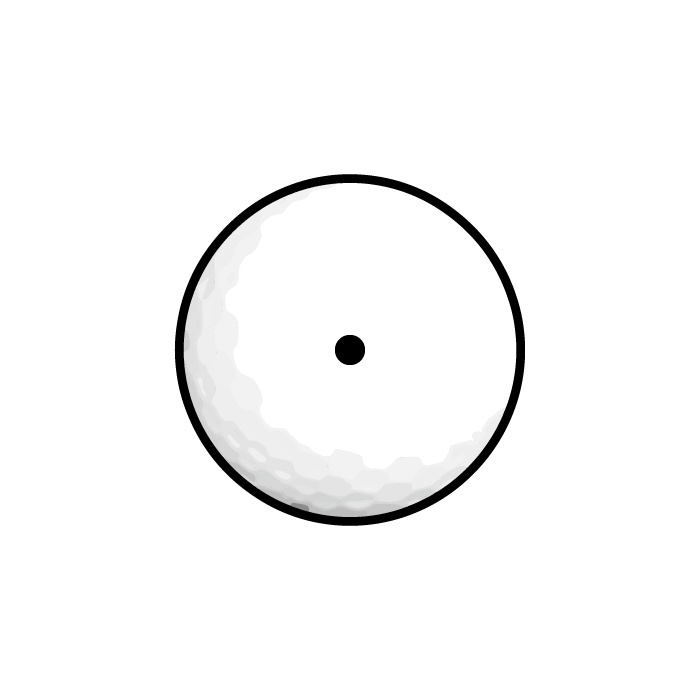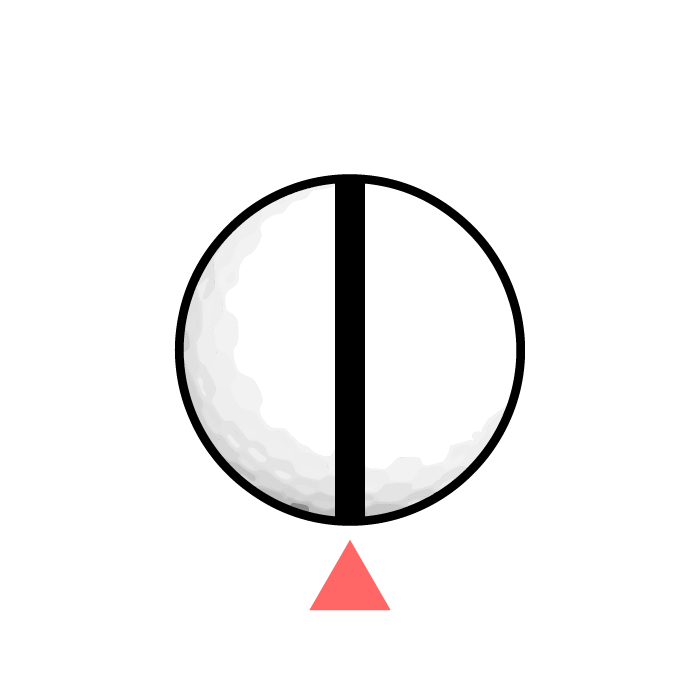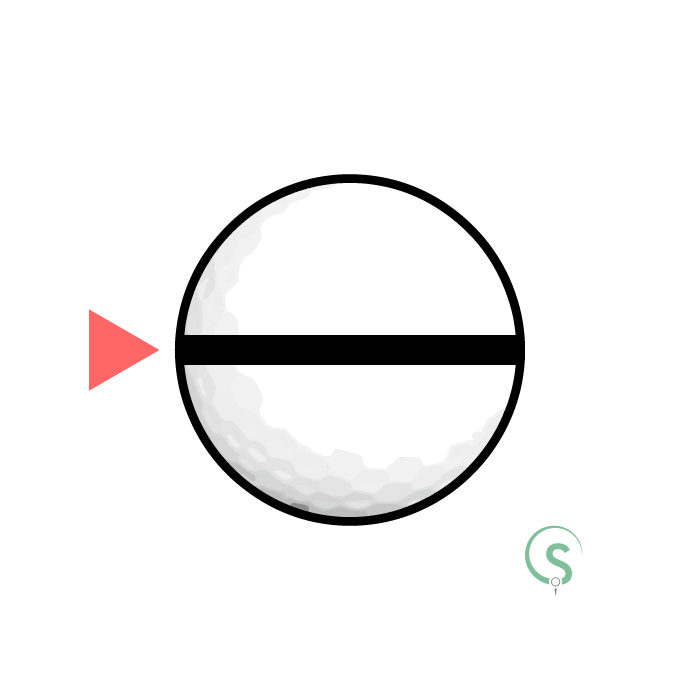Ball Behaviour
Steps One & Two
Step One
You’ll note in the below diagrams a straight line through the centre of the ball. The line begins at the rear of the ball and points towards the intended target. If I were to apply force along this line, what would happen to the ball? It would be moved in a straight line, towards the target until other forces acted upon it. Not only would it move in a straight line, it would do so without any rotation, the ball would not spin.(1)
You can perform an experiment of your own to see this in action. Take a golf ball and a hard, flat surface, like a smooth concrete floor. If you were to drop the ball vertically onto this hard surface, without it rotating as it falls, the ball will bounce back in a straight line, again without rotating. The ball behaved this way because the force applied to it was directly through the centre of the ball, albeit pointing upwards in this experiment.
You can perform an experiment of your own to see this in action. Take a golf ball and a hard, flat surface, like a smooth concrete floor. If you were to drop the ball vertically onto this hard surface, without it rotating as it falls, the ball will bounce back in a straight line, again without rotating. The ball behaved this way because the force applied to it was directly through the centre of the ball, albeit pointing upwards in this experiment.
A
B
C
A


B


C


Step Two
If you had performed the above experiment, you’d also notice something else about the ball’s behaviour, aside from its direction and lack of rotation. The ball didn’t return to the height it was dropped from when it’s bounced back. This is because the collision between the ball and floor was inelastic.(2) This means during the collision there was a loss of kinetic (motion) energy. How much kinetic energy is lost determines how high the ball bounces. If a lot of energy is lost, the ball doesn’t bounce so high, and vice versa. We measure this energy loss on a scale of 1 to 0. If there is no kinetic energy loss and the ball returns to the height it’s dropped from, that would be a 1 on this scale. If you dropped the ball and it didn’t bounce at all and all the kinetic energy was lost, this would be a 0. This scale is known as the coefficient of restitution.(3) Golf balls and clubs are designed to be as elastic as possible,(4) so that kinetic energy isn’t lost and your ball travels faster and further.
Besides from the materials the ball and club are made from, you can also affect the coefficient of restitution by controlling the force applied to the ball during impact. In order to make the ball go as far as possible and maximise the coefficient of restitution, you need to compress the ball as much as you can by using sustained force through impact. If the clubhead is decelerating through the impact interval you are “leaking” compression and failing to perform “the secret of golf” - sustaining the line of compression.
Besides from the materials the ball and club are made from, you can also affect the coefficient of restitution by controlling the force applied to the ball during impact. In order to make the ball go as far as possible and maximise the coefficient of restitution, you need to compress the ball as much as you can by using sustained force through impact. If the clubhead is decelerating through the impact interval you are “leaking” compression and failing to perform “the secret of golf” - sustaining the line of compression.
